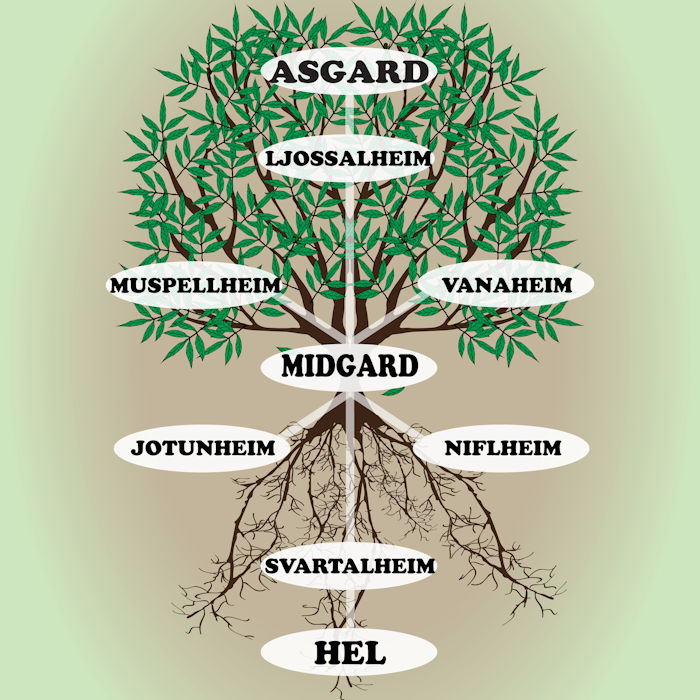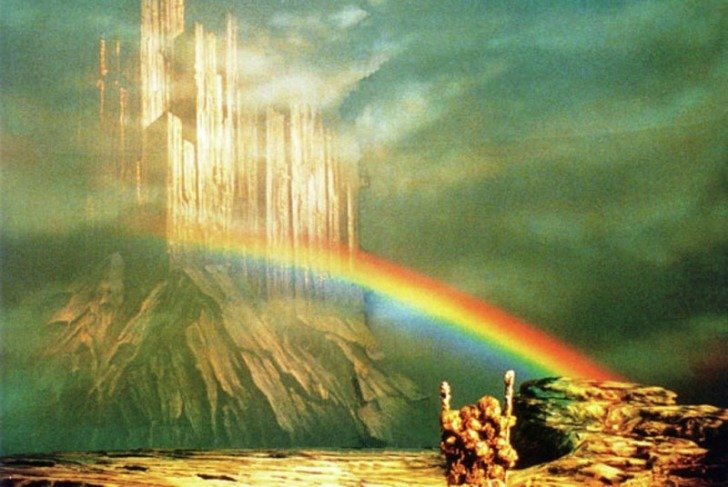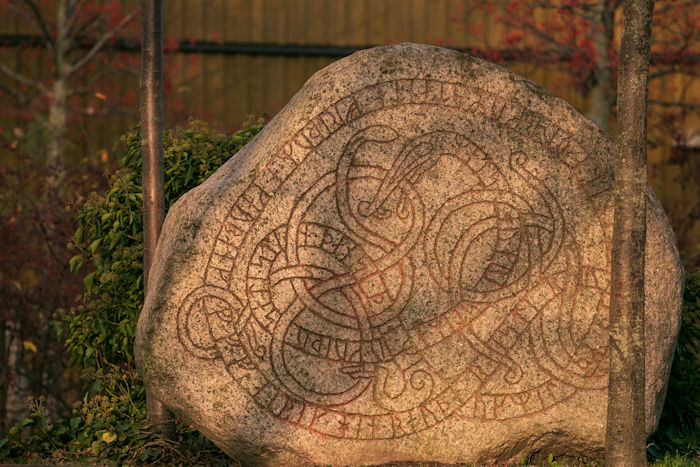Mysterious Nine Worlds Of Yggdrasil – The Sacred Tree Of Life In Norse Mythology
A. Sutherland - AncientPages.com - Norse myths and legends give us elaborate descriptions of the Nine Worlds, located in the roots and branches of Yggdrasil, a gigantic Universal World Tree.
Yggdrasil and its nine worlds. Credit: Adobe Stock - Ko_Te
The roots of Yggdrasil have their beginnings in the interior of the Earth. There the kingdom of giants and the land of the dead are located.
The Tree of Life was believed to be the center of the Universe- Let us explore its mysterious worlds. Credit: Adobe Stock - ivanovevgeniy
Three of these worlds are above the Earth, and the most important is Asgard.
Asgard - The Abode Of Norse Gods
Asgard and Bifrost in Otto Schenk's interpretation of Wagner's drama Das Rheingold. Credit: Public Domain
This realm was beyond and above the human world so that it might have been in the sky; old myths confirm that only one road leads to Asgard – the rainbow (the Bifrost bridge), connecting Earth with Heaven. Asgard was the headquarters of the Aesir Gods, including Odin, Thor, Idun, Balder, and many more.
Asgard has as many as 540 halls, and one of them (Valaskjalf ) belongs to Odin, the god of war and magic and the most complex figure of the Norse pantheon.
Muspelheim – The Land Of Primordial Fire And Flames
Credit: Adobe Stock - ivanovevgeniy
It is the second world located "above" the Earth. Muspelheim is ruled by the evil fire god Surt or Surtur (Black). Sparks fly up to the sky from this realm, creating heavenly bodies. Surt, who guards the entrance to his world with a blazing sword, has burning hair and is covered in glowing lava. Surt's crucial role begins at the end of the world, according to a myth.
The fire giants and demons are believed to inhabit Muspelheim, but it can also be "a no man's land.
Alfheim – The Home Of The Light Elves
“Forest Sunrise” by Albert Bierstadt. Credit. Public Domain
The third world, located above the Earth, belongs to beautiful minor deities of nature and fertility.
The Light Elves are highly skilled in art and magic and are also believed to be guardian angels. They have magical powers, which give them abilities to both hinder and help humans.
One of the major gods, Freyr, who controls the weather on the planet Earth, also oversees the Alfheim world.
Midgard – The Home Of Humans Encircled By Evil Serpent
Rune stone with Midgard serpent in Trelleborg, Sweden. Credit: Adobe Stock - Lars Gieger
The world of humans is called Midgard (or Mannheim) and is located precisely below Asgard. It is surrounded by vast oceans that cannot be passed and coiled by the Midgard Serpent, an evil, gigantic sea serpent, Jormungand, yet another child of Loki's trickster god. In Norse mythology, Jormungand is so big that it encircles the world, biting its tail.
During Ragnarok, the great thunder god Thor will finally kill monstrous Jormungand, but not before Jormungand can drop poison on Thor and kill him.
Vanaheim – The Home Of The Vanir Gods
The beautiful home of the Vanir gods was called Vanaheim. Painting by Albert Bierstadt. Credit. Public Domain
It is the home of the Vanir, the Old Norse gods, the masters of sorcery and magic, who could also predict the future. The Vanir were related to the planet Earth, fertility, and wealth.
In the beginning, the Aesir and Vanir were at war, but eventually, they realized this was meaningless because neither side could win. They made peace and decided to fight their true enemy – the giants. The Vanir gods – Niord (god of the sea and seafaring), Freya (goddess of love, beauty, and fertility, who also had powerful abilities to manipulate one's destiny), and Freyr (the patron of farming, weather, and, as phallic fertility) decided to live among the Aesir in Asgard.
Hoenir and Mimer, who represented the Aesir gods, moved as hostages to Vanaheim. In some myths, Mimer was beheaded by the Vanir because he refused to give them the secrets of the Aesir.
Jotunheim – Also Known As The World "Beyond The Fence"
Left: View from Knutshøi towards central Jotunheimen. Credit: Jack R. Johanson - CC BY-SA 3.0Right: Stormjätten jordskakaren (Storm giant, the Earthshaker) by John Bauer (1882 - 1918). Credit: Public Domain
It is one of the nine worlds inhabited by giants ("Jotuns") - Frost Giants, Ice Giants, Mountain Giants, and Storm Giants. The inhabitants of Jotunheim are described in myths as twenty to thirty feet tall, muscular with flesh and bone density three times that of humans.
From Asgard, the world of giants is separated by the river Ifing. It is a cold, mountainous world covered with deep forests. They are vulnerable to heat and thrive best in their environment.
According to ancient myths and legends, the first living being that walked the Earth was a Jotun called Ymir, and it was from him the world was created.
The fearful, superhuman giants living in Jotunheim were enemies of the Aesir gods and goddesses. These two races fought frequent battles. However, three Jotun giants managed to enter Asgard and were accepted. These three giants were Aegit, the trickster god Loki and Karl.
Svartalfheim (Nidavellir) - The Underground Home Of The Dwarves
Artist's representation of Svartalfheim. Source: Fair Use
This realm is known as the world of dwarves, who hate the sun and the light of any kind. If exposed to it, these beings turn immediately to stone.
They created corridors, never-ending passages, and tunnels in this underground world. They are excellent miners and highly skilled craftsmen who extract and store precious metals and stones, but they do not have a positive attitude towards humans, giving them nightmares and haunting the animals.
They are not pleasant to look at and are considered nothing but trouble.
Niflheim – Most Inhospitable World Within Yggdrasil
Credit: Adobe Stock - liuzishan
Finally, there is Niflheim, the most inhospitable and darkest world of the densest mists and fogs. It was the first of the nine worlds created within Yggdrasil and located north of the great plain of Ginnungagap.
Niflheim was eventually given to the goddess Hela and became the land of the dead, additionally divided into nine regions.
In this world is located the well (or spring) of Hvergelmir ("bubbling" or "boiling spring") from whence all cold rivers, Elivagar, run. The third root of the World Tree, Yggdrasil, hangs over the poisonous vapor that rises from Hvergelmir.
A terrible, monstrous corp-eating dragon – Nithog (Nighug), guards the well. Hvergelmir is the origin of the living and where the living will, one day, return when they die.
According to the Eddas, a mysterious gate in this world opens into "the abode of death" – Helheim.
Helheim – The Abode Of The Dead
Image (painting) of Hel, daughter of Loki, from Norse Mythology, as described in Edda. Image credit: Mkasahara - CC BY-SA 4.0
Deep down in Niflheim, beneath Yggdrasil's third root, there is Helheim (or Hel), a crowdy, icy and cold place full of spirits of those who did not die in battle but of diseases, suicide, or old age. Helheim is ruled by the Goddess Hel (or Hela), a daughter of Loki, a trickster god who enjoyed mischief and one of the principal deities in the Norse pantheon.
Updated on December 5, 2022
Written by – A. Sutherland AncientPages.com Staff Writer
Copyright © AncientPages.com All rights reserved. This material may not be published, broadcast, rewritten or redistributed in whole or part without the express written permission of AncientPages.com
Expand for referencesY. Grimes, The Norse Myths
N. Gaiman, Norse Mythology
More From Ancient Pages
-
 A 2,700-Year-Old Urartians’ Ayanis Castle And Haldi Temple – Soon An Open-Air Museum
Archaeology | Aug 10, 2020
A 2,700-Year-Old Urartians’ Ayanis Castle And Haldi Temple – Soon An Open-Air Museum
Archaeology | Aug 10, 2020 -
 Modern Humans Did Not Enter Europe By Sea – New Study Says
Archaeology | Mar 7, 2022
Modern Humans Did Not Enter Europe By Sea – New Study Says
Archaeology | Mar 7, 2022 -
 Ancient Alaskans Were Freshwater Fishers – Earliest Evidence Found
Archaeology | Jun 19, 2023
Ancient Alaskans Were Freshwater Fishers – Earliest Evidence Found
Archaeology | Jun 19, 2023 -
 Ancient Magical Bowls Inscribed With Spells And Other Rare Artifacts Seized In Jerusalem Raid
Archaeology | Mar 14, 2022
Ancient Magical Bowls Inscribed With Spells And Other Rare Artifacts Seized In Jerusalem Raid
Archaeology | Mar 14, 2022 -
 Forbidden Knowledge: Secret Ancient Gates Of The Shining Ones – Geomantic Energy Vortices – Part 2
Featured Stories | Jul 16, 2019
Forbidden Knowledge: Secret Ancient Gates Of The Shining Ones – Geomantic Energy Vortices – Part 2
Featured Stories | Jul 16, 2019 -
 Viking Ragnar Lodbrok Wanted To Kill His Son Ivar The Boneless
Featured Stories | Jun 19, 2017
Viking Ragnar Lodbrok Wanted To Kill His Son Ivar The Boneless
Featured Stories | Jun 19, 2017 -
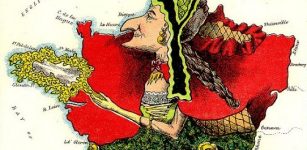 Strangest Maps Ever Created – You Have Never Seen Our World Like This!
Artifacts | Jun 25, 2014
Strangest Maps Ever Created – You Have Never Seen Our World Like This!
Artifacts | Jun 25, 2014 -
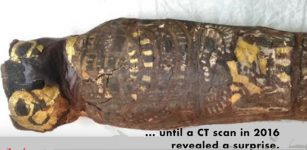 Micro-CT Scans Revealed: It Wasn’t Egyptians’ Falcon-Headed Deity But Malformed Human Baby
Archaeology | Jun 2, 2018
Micro-CT Scans Revealed: It Wasn’t Egyptians’ Falcon-Headed Deity But Malformed Human Baby
Archaeology | Jun 2, 2018 -
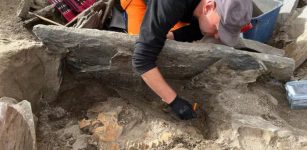 ‘Sensational’ Discovery Of Large Untouched 4,000-Year-Old Grave In Norway
Archaeology | Nov 10, 2023
‘Sensational’ Discovery Of Large Untouched 4,000-Year-Old Grave In Norway
Archaeology | Nov 10, 2023 -
 Charlotte Corday And The Assassination Of Marat – Was She A Coldblooded Murderess Or Courageous Female Hero?
Featured Stories | Jun 2, 2017
Charlotte Corday And The Assassination Of Marat – Was She A Coldblooded Murderess Or Courageous Female Hero?
Featured Stories | Jun 2, 2017 -
 Fascinating Millennia Old Natufian Culture: Funerals With Flowers, Food And Pounding Sound Of Mortars
Civilizations | Aug 22, 2015
Fascinating Millennia Old Natufian Culture: Funerals With Flowers, Food And Pounding Sound Of Mortars
Civilizations | Aug 22, 2015 -
 Evidence Of A Lost Advanced Ancient Civilization In Cincinnati – Remarkable Artifacts And Ancient Bodies That Shouldn’t Exist
Artifacts | May 8, 2018
Evidence Of A Lost Advanced Ancient Civilization In Cincinnati – Remarkable Artifacts And Ancient Bodies That Shouldn’t Exist
Artifacts | May 8, 2018 -
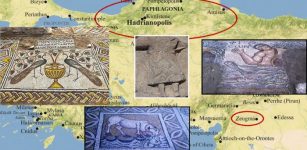 1,800-Year-Old Slab Engraved With Inscription Unearthed In Ruins Of Ancient City Of Hadrianapolis
Archaeology | Jan 5, 2020
1,800-Year-Old Slab Engraved With Inscription Unearthed In Ruins Of Ancient City Of Hadrianapolis
Archaeology | Jan 5, 2020 -
 Why Was The Iron Age Village Near Elgin In Scotland Suddenly Abandoned And Burned Down?
Archaeology | Jul 29, 2022
Why Was The Iron Age Village Near Elgin In Scotland Suddenly Abandoned And Burned Down?
Archaeology | Jul 29, 2022 -
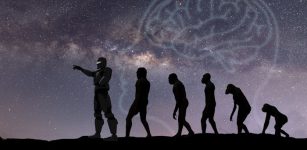 Unknown Aspect Of Human Evolution Discovered Through Ancient DNA Study
Archaeology | Nov 1, 2022
Unknown Aspect Of Human Evolution Discovered Through Ancient DNA Study
Archaeology | Nov 1, 2022 -
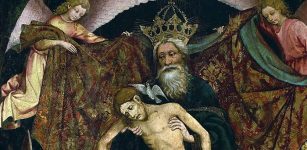 Looted ‘Pietas Domini’ Gothic Altar Dated To 1435 AD Returns From Germany To Poland
Archaeology | Mar 22, 2020
Looted ‘Pietas Domini’ Gothic Altar Dated To 1435 AD Returns From Germany To Poland
Archaeology | Mar 22, 2020 -
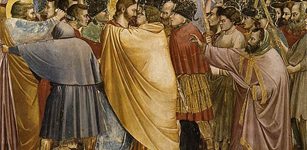 Judas: A Famous Traitor Or A Hero?
Biblical Mysteries | Oct 16, 2017
Judas: A Famous Traitor Or A Hero?
Biblical Mysteries | Oct 16, 2017 -
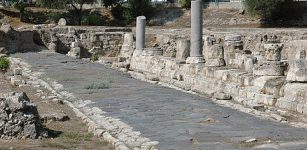 Biblical City Of Tarsus: Excavations Reveal Its Secrets From Paul the Apostle’s Times
Archaeology | Jan 4, 2016
Biblical City Of Tarsus: Excavations Reveal Its Secrets From Paul the Apostle’s Times
Archaeology | Jan 4, 2016 -
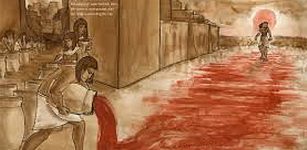 Lady Of Drunkenness And How God Ra Wanted To Teach Humans A Lesson
Egyptian Mythology | Jun 20, 2019
Lady Of Drunkenness And How God Ra Wanted To Teach Humans A Lesson
Egyptian Mythology | Jun 20, 2019 -
 Is Mysterious Prehistoric Jiroft The Legendary Land Of Aratta?
Featured Stories | Aug 20, 2015
Is Mysterious Prehistoric Jiroft The Legendary Land Of Aratta?
Featured Stories | Aug 20, 2015

